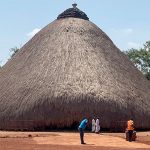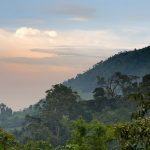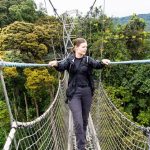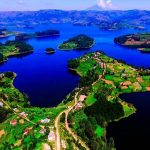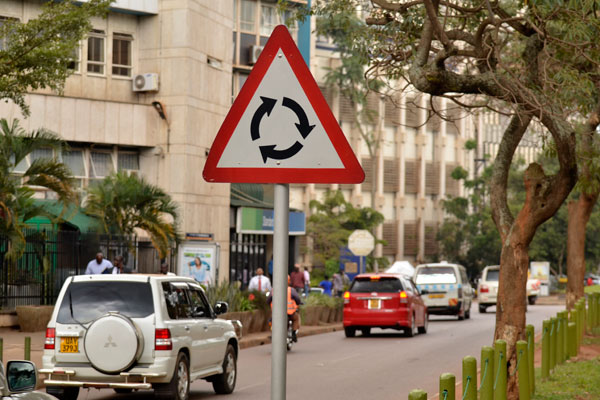UNESCO Uganda – the Platform of true Nature and Humanity.
UNESCO Uganda… OK! even before that, seen the acronym; UNESCO before? Surely you must have, if not, then you have certainly hard about it or simply the UNITED NATIONS. And does it mean any thing to you? I guess not so much especially if you have only seen it out there flying about on the web and the news.
But what exactly does UNESCO stand for? It is the “United Nations Education, Scientific, and Cultural Organization”. Still slightly vague I guess but the interesting bit is the reason for the existence of the organization. Its sole purpose is to commend the virtues of the “common heritage of humanity.”
Now, not many places in the world are blessed with such recognition – with sites that uphold the common heritage of humanity. Italy leads the pack with 47 world heritage sites but while you look through that list of countries, you will without doubt find Uganda with 3 world heritage sites.
I know not many would have guessed that Uganda is part of this elite list but let’s look at what we have here;
For starters, to get a UNESCO title, you have to earn one. How? Well, there are about 10 criterion, and you have to meet at least one of them.
Of the criterions, the interesting one is the first one; “be a masterpiece of creative genius” and the other being ” to contain the most important and significant natural habitats for in-situ conservation of biological diversity, including those containing threatened species of outstanding universal value from the point of view of science or conservation.”?
It is therefore not surprising why the 3 UNESCO Uganda sites – the Tombs of the Buganda kings in Kasubi, the Bwindi Impenetrable National Park and the Rwenzori Mountains National Park are part of this list. They are outstanding, aren’t they?
Kasubi Tombs
Exceptionally natural are these UNESCO Uganda sites! – take for example the Kasubi tombs, these fall under more than one category. They are certainly both a creative genius and outstanding architecture and bear a unique testimony to a cultural tradition which still lives on.
It is so sad to imagine however that unfortunately these tombs got burned in a careless blaze that reduced part of them to ashes about 2 years ago. The positive is that reconstruction is under way and with a lot of precision, you should see exactly the same structure as before – fingers crossed!
… But more about these tombs; it is the burial ground for the previous four kings of Buganda kingdom and is a major spiritual centre for the Baganda with traditional and cultural practices preserved. Rituals related to the Buganda culture are carried out here and it is a good representation of a place where communication links with the spiritual world have been maintained.
The main tomb building, which is circular and surmounted by a dome, is an example of breathtaking master piece of craftsmanship. The detailed use of the vegetal material; the spear grass, the wooden poles, reeds, wattles and back cloth is an outstanding creative genius displayed by the Buganda kingdom since the 13th Century. You will be hard pressed to find something like this anywhere else in the world.
These tombs don’t end at just being on the UNESCO Uganda heritage sites list, they are a true representation of the African culture that depicts the continuity of living tradition. They are an important historical and cultural symbol for Uganda and East Africa at large.
Bwindi Impenetrable National Park
And then the Bwindi Impenetrable National Park – count this as one of my favourite, whether it’s a UNESCO Uganda heritage site or not – which it is any way!
Not only is it one of, if not the only places in the world where the endangered mountain gorillas still live (it is home to close to half of the world mountain gorilla population), but it’s also known for its exceptional biodiversity with more than 160 species of trees and over 100 species of fern with lots of birds and butterflies. Would you like to explore the park? The Bwindi Impenetrable Park Website offers all the information you need to plan a memorable safari to the region.
Rwenzori Mountains National Park
The Rwenzori Mountains National Park completes the UNESCO Uganda list. It is part of the Rwenzori mountain chain, which includes Africa’s third highest peaks (Mount Margherita: 5,109 m) – Mountain hikers will love to put this as part of their ‘things to do list’!
The region’s glaciers, water falls and the lakes make it one of Africa’s most beautiful alpines areas. The multitude of the fast flowing rivers, the magnificent water falls and the stratified vegetation make this place exceptionally scenic and beautiful. It’s home to many natural habitats of endangered species with a rich and unique flora comprising among others, the giant heather, groundsels and the lobelias.
Still with the Ugandan kingdoms, the Park is an important cultural heritage for the Rwenzururu Kingdom and supplies the local community with various wild resources.
More sites that are noticeably outstanding and magnificent as well have been submitted to UNESCO for consideration – places like; Bigo bya Mugenyi, Kibiro – the salt producing village, the Ntusi man made mould and basin, the Nyero Rock paintings in the east and the Mgahinga Gorilla National Park, might one day be added to the growing list of UNESCO Uganda heritage sites.

